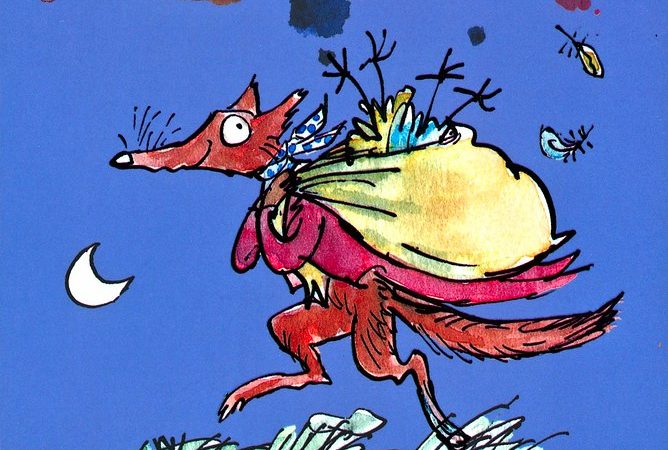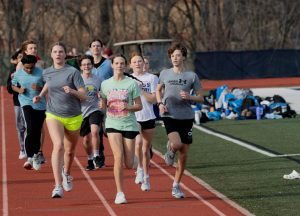The Tricky Art Of Adaptation
What Roald Dahl can teach us about making books to movies
Author Roald Dahl wrote 17 children’s novels and 20 children’s stories altogether. His works include Matilda, Charlie and the Chocolate Factory, James and the Giant Peach, George’s Marvelous Medicine, and Fantastic Mr. Fox.
October 29, 2019
As far back as the monster movies of the early 30s, pieces of literature have been adapted to film in an attempt to enhance the emotional impact of its source material. Despite the astronomical amount of changes and improvements to the movie industry, this practice hasn’t gone anywhere. Whether it be the glut of teenage-fiction adaptations aping off the success of The Hunger Games and Divergent, or the numerous bargain-bin romance novels that got a movie adaptation to make a quick buck off of 40-year-old moms across the country. But there is one author~who has had over a dozen of his stories adapted to the big screen~that can teach us a lot about what we get out of adaptations and why they’re able to be so successful.
Roald Dahl was born on September 13th, 1916 in Wales, England. During his life, he wrote 17 children’s novels and 20 children’s stories altogether. His works include Matilda, Charlie and the Chocolate Factory, James and the Giant Peach, George’s Marvelous Medicine, and Fantastic Mr. Fox. Whenever I hear his name, it conjures up nostalgic memories of grade school reading time, sitting at my desk with the taste of hard pretzel squares firmly on my taste buds from my lunch earlier. As someone who generally has a greater understanding of movies over books, I can see why a lot of his stories don’t always translate perfectly. Although all of these stories are being told by a single person with a defined sense of style and humor, their film equivalents are being handled by various different writers, producers, and directors.
The more people involved with a movie, the more sources of creative input influencing how the movie is crafted. It’s easy to see how something like Willy Wonka and the Chocolate Factory (1971) translates the creative imagery and occasionally dark sense of humor fairly well, but the Tim Burton counterpart, Charlie and the Chocolate Factory, is such a departure from the tone and style of the original story that calling it an adaptation would be somewhat inaccurate. Part of what people look for in a book adaptation is being able to see characters exactly as they imagined them. That might not be a reasonable expectation. While most literature (Even children’s stories) is somewhat up to personal interpretation, movies convey a majority of their information by showing you, rather than telling you. It’s this reason a book adaptation can be so wildly different from its source material, because you’re seeing how the director interprets the story, rather than how you, the reader, did.
The main thing a studio should ask whenever making an adaptation is a very simple question; What am I gaining vs. what am I losing? Whenever you are adapting a piece of entertainment to another medium, you are immediately eliminating the qualities unique to the medium it came from. For example, when you turn a video game into a movie, you are eliminating the main aspect that makes that medium special; Control. Books can be read in multiple sittings, while movies are best experienced in one sitting. While The Lord of the Rings books are far longer than the movies, you can stop and start whenever you like and still get the full experience. Dahl movies don’t have to worry about this, however, because the stories are often short and simple enough to read in one sitting. Along with this, when you have less material to adapt, you can not only create a movie that feels as complete and intentional as its source material, but one that embraces the aspects that are unique to the medium of film itself.
Being faithful to the original is important, but not to the point where the films become carbon-copies of what they came from. Movies have the benefit of music, cinematography, and acting to enhance the emotional impact that comes from the descriptive writing of books. Fantastic Mr. Fox (2009), my favorite Roald Dahl movie adaptation, elevates the material of the book in a way that only a movie can. The director, Wes Anderson, took the simple illustrations of Quintin Blake to create one of the most visually pleasing stop-motion movies I have ever seen, while simultaneously retaining the fun, sharp dialogue Roald Dahl books can be known for. James and the Giant Peach mixes live-action and stop motion to separate the world inside the peach from the outside world. Willy Wonka and the Chocolate Factory wouldn’t be nearly as recognized in pop culture if it weren’t for Gene Wilder’s performance. If film studios understand that adaptations need to distinguish themselves from their source material, we could potentially see movies that are able to stand by themselves without the need for us to even compare them to the source material in the first place.
My attraction to Dahl’s work being put to film might seem unnecessarily specific, but it gives us a good idea of how adaptations can be handled. With over a dozen of his stories being adapted by many different types of creatives, and with movie adaptations as recent as Spielberg’s BFG (2016), it’s impressive to see how the works of Roald Dahl have remained relevant for over 50 years. If you haven’t seen any of these movies, I recommend seeing Mr. Fox at least. Here’s to hoping that studios can learn from these examples.









